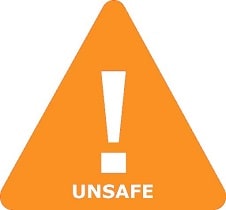Is EINECS 204-273-9 Safe in Breastfeeding
Question
I am a breastfeeding mother and i want to know if it is safe to use EINECS 204-273-9? Is EINECS 204-273-9 safe for nursing mother and child? Does EINECS 204-273-9 extracts into breast milk? Does EINECS 204-273-9 has any long term or short term side effects on infants? Can EINECS 204-273-9 influence milk supply or can EINECS 204-273-9 decrease milk supply in lactating mothers?
EINECS 204-273-9 lactation summary

- DrLact safety Score for EINECS 204-273-9 is 5 out of 8 which is considered Unsafe as per our analyses.
- A safety Score of 5 indicates that usage of EINECS 204-273-9 may cause serious side effects in breastfed baby.
- Our study of different scientific research indicates that EINECS 204-273-9 may cause moderate to high side effects or may affect milk supply in lactating mother.
- Our suggestion is to use safer alternate options rather than using EINECS 204-273-9 .
- It is recommended to evaluate the advantage of not breastfeeding while using EINECS 204-273-9 Vs not using EINECS 204-273-9 And continue breastfeeding.
- While using EINECS 204-273-9 Its must to monitor child for possible reactions. It is also important to understand that side effects vary largely based on age of breastfed child and time of medication in addition to dosage.
- Score calculated using the DrLact safety Version 1.2 model, this score ranges from 0 to 8 and measures overall safety of drug in lactation. Scores are primarily calculated using publicly available case studies, research papers, other scientific journals and publically available data.
Answer by Dr. Ru: About EINECS 204-273-9 usage in lactation
Fungicide used to treat fungal affected cereals. Also produced by garbage dump burning. It is a persistent organic pollutant (POP). Very toxic product after accidentally occuring contamination. It is not necessary to let breast milk be tested except after extraordinary exposure. Benefits of breastfeeding are largely more important than risk related to the presence of mild level environment pollutants in human milk, in many instances, they are at lower content than those found in cow’s milk or other foods. (Codex alimentarius FAO-WHO).
Alternate Drugs for Contaminant, Environmental Pollutant
Hydroquinone(Low Risk)
Aflatoxin(Low Risk)
Aniline(Unsafe)
Polybrominated(Unsafe)
Bromum(Low Risk)
Cadmium(Low Risk)
Cobalt(Safe)
DDT(Low Risk)
Dieldrin(Low Risk)
Formaldehyde(Unsafe)
Hexachlorobenzene(Unsafe)
White-Spirit(Unsafe)
Mercury(Low Risk)
Nitrate(Low Risk)
Lead(Unsafe)
Tetrachloroethylene(Unsafe)
Chromium Trioxide(Unsafe)
Aminobenzene(Unsafe)
Perchloroethylene(Unsafe)
Phenylamine(Unsafe)
Hydroquinol(Low Risk)
Methanal(Unsafe)
Methylene oxide(Unsafe)
1,4-Benzenediol(Low Risk)
Quinol(Low Risk)
Formalin(Unsafe)
Formol(Unsafe)
